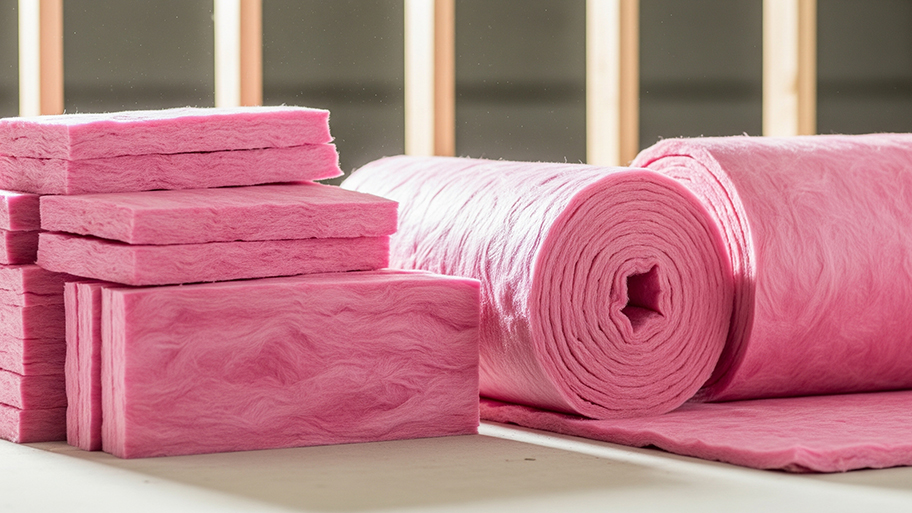
The cost to insulate a basement varies based on materials, size, and other factors, as well as how much of the work you wish to perform yourself.
Tackle cellulose insulation installation on a freed-up weekday


Dry-blown cellulose insulation (loose-fill or dense pack) is a great alternative to fiberglass insulation for the everyday DIYer. Unlike the dangers of fiberglass insulation, there are few health risks involved when installing cellulose insulation. Before you get started on this project, make sure you have the right supplies and tools handy, and research the right R-value for your project.
R-value specifies insulation level, or the insulation’s ability to resist heat traveling through it. The higher the R-value, the better the thermal performance of the insulation. R-values are split into zones based on your location in the country. Avoid adding insulation over any heat sources, as this poses a fire risk. Also, grab a buddy to help speed up the process.
Ready to DIY cellulose insulation? The steps below detail how to install insulation without hiring a professional.
Correctly installing insulation can be difficult. Health and safety risks are involved; therefore, we highly recommend contacting a pro to ensure the job is completed safely and correctly.
First, you’ll need to ensure fixtures are covered to avoid a fire hazard. Barriers come in the form of metal, wood, or IC-rated luminaries. Create barriers over fixtures such as:
Recessed light fixtures
Chimneys
Furnace flues
Heating vents
The attic door
You’ll need to create a barrier of at least three inches, but check your local codes to see exactly how high your barriers should be.
Grab your gloves, masks, and safety goggles for this next step. Also, enlist the help of your project partner. Load up the blowing machine with the cellulose, breaking up any clumps in the insulation as you go to prevent clogs in the hose. Lay a tarp underneath the loading area to catch any of the loose insulation because if the insulation picks up on debris, it becomes unusable.
Your partner will need to continuously feed the insulation into the blowing machine, so keep an open line of communication during the process.
Turn on the blowing machine, and in unison with your partner, work the machine hose to spray the insulation into the wall cavities. The insulation should stick inside and create a compact seal without any extra work on your end. When spraying cellulose insulation, remember:
Start in the corners of the room to ensure you don’t end up cornering yourself
Spray the floors of the attic if insulating the attic area
Do not fill the floors any higher than the joists
When the floors are finished, turn off the machine.

Once you spray your insulation, it will cover the joists and studs on the wall and floor.
Next, you’ll need to remove the excess insulation and create a smooth surface for finishing applications. Grab your meter stick (or anything wide enough to expand across two studs) and run the meter stick down the wall, exposing the studs but keeping the cellulose insulation in the wall cavities. This will drop all excess insulation to the floor, which you’ll take care of in step five.
The same process applies to the floor joists if you’re working in the attic. To ensure you don’t fall through the ceiling, level out an area for the kneeboard. It’ll also be easier to level out the rest of the floor this way.
Suck up any remaining insulation with your vacuum. Head on over to your local waste management website or give them a ring to determine where to dispose of the material properly. Insulation can not be thrown into a normal garbage can.
According to Angi data, 54% of homeowners report having blown-in insulation in their attics. Other common locations for this essential home insulation are inside the walls and ceilings.
Out of all the different types of insulation, cellulose insulation is the most DIY-friendly, but insulating your home is still an intermediate-level project.
If you’re not comfortable handling the blowing machine, are unsure of the fixtures you need to cover, or can’t find a helping hand, then consider leaving this job to an insulation company near you. The average cost of labor for insulation installation is around $0.25 to $0.50 per square foot (or about $40 to $80 per hour). Your pro will take over measuring the square footage, buying the proper insulation to reach your optimal R-value, and installing it correctly.
From average costs to expert advice, get all the answers you need to get your job done.

The cost to insulate a basement varies based on materials, size, and other factors, as well as how much of the work you wish to perform yourself.

Crawl space insulation costs vary by size, insulation type, and material. Read this guide to learn how much your crawl space insulation could cost.

How much does a radiant barrier cost? Our guide breaks down prices by type of barrier and size of your attic space.

Face vs. unfaced insulation can make all the difference in keeping your home insulated for decades. Here’s what you need to know about which one to choose.

How much blown-in insulation do I need? Requirements vary by location and material choice. Learn how to estimate your needs for blown-in insulation.

Knowing how to calculate the R-value of insulation and other materials is essential for determining whether you have too little or too much of it.